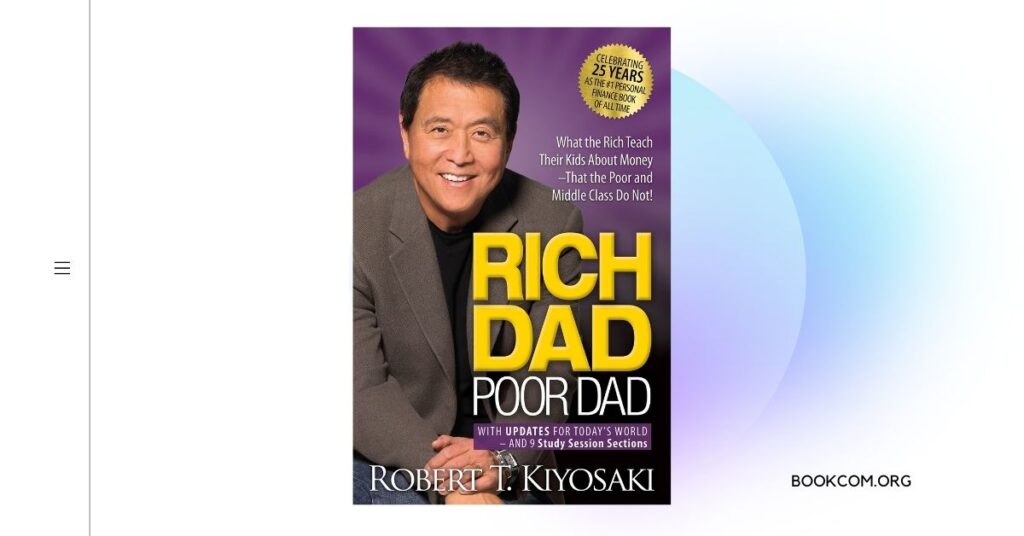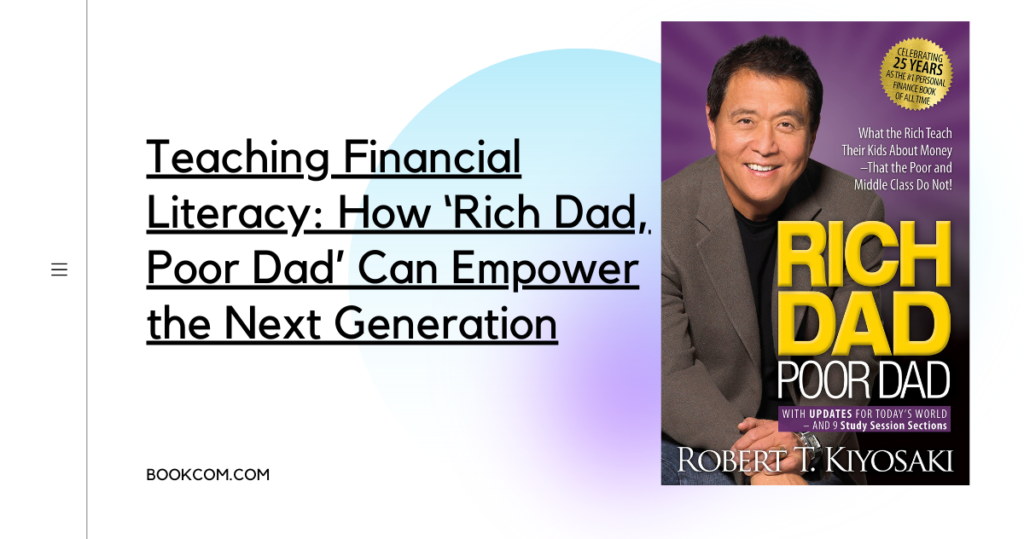In the world of personal finance, few books have had as profound an impact as “Rich Dad, Poor Dad” by Robert Kiyosaki. This international bestseller offers a unique perspective on wealth accumulation and challenges conventional beliefs about money. Through the lessons shared by the author’s two fathers – his real dad (poor dad) and his best friend’s dad (rich dad) – the book imparts invaluable insights that can transform your financial outlook. In this article, we will delve into five key lessons from “Rich Dad, Poor Dad” and explore how they can reshape your mindset and approach to money.
Lesson 1: Understand the Difference between Assets and Liabilities
One of the fundamental concepts in “Rich Dad, Poor Dad” is distinguishing between assets and liabilities. Kiyosaki defines an asset as something that puts money in your pocket, such as real estate, stocks, or businesses. On the other hand, liabilities are things that take money out of your pocket, such as consumer debt or excessive spending. By shifting your focus towards acquiring income-generating assets and minimizing liabilities, you can begin to build wealth over time.
Practical Tip: Start by evaluating your current financial situation. Identify your assets and liabilities, and develop a strategy to increase your assets while reducing or eliminating liabilities. Consider investing in income-generating assets like rental properties, dividend-paying stocks, or creating an online business.
Lesson 2: Embrace Financial Education
In “Rich Dad, Poor Dad,” Kiyosaki emphasizes the importance of financial education. He argues that our traditional education system often neglects teaching vital financial skills, leaving individuals ill-prepared to navigate the complex world of money. By actively seeking financial knowledge, you empower yourself to make informed decisions and take control of your financial future.
Practical Tip: Expand your financial education by reading books, attending seminars, and following reputable financial blogs or podcasts. Consider exploring topics such as budgeting, investing, asset protection, and entrepreneurship. Continuously learning about money will provide you with the tools needed to make smart financial choices.
Lesson 3: Leverage the Power of Passive Income
Another transformative lesson from “Rich Dad, Poor Dad” revolves around the concept of passive income. Kiyosaki explains that relying solely on earned income from a job can limit your financial growth. Passive income, on the other hand, allows money to work for you even when you’re not actively involved. By building multiple streams of passive income, you can achieve financial independence and create more opportunities for wealth creation.
Practical Tip: Explore passive income opportunities such as rental properties, dividend-paying stocks, peer-to-peer lending, or creating digital products. Develop a diversified portfolio of income streams that require minimal ongoing effort and generate consistent cash flow.
Lesson 4: Take Calculated Risks and Learn from Failures
“Rich Dad, Poor Dad” encourages readers to embrace risk-taking and learn from failures. Kiyosaki argues that fear of failure often prevents individuals from venturing into new opportunities or pursuing their financial dreams. To overcome this fear, it is crucial to understand that failure is an essential part of the learning process. By taking calculated risks, you open yourself up to valuable experiences and potential financial breakthroughs.
Practical Tip: Start small by taking calculated risks in your financial endeavors. Begin with low-risk investments or side businesses while continuously evaluating and adjusting your strategies. Embrace failures as learning opportunities and use them to refine your approach and improve your financial decisions.
Lesson 5: Develop a Wealthy Mindset
At the core of “Rich Dad, Poor Dad” lies the importance of developing a wealthy mindset. Kiyosaki emphasizes that achieving financial success requires a shift in how we think about money and wealth. Cultivating a positive and abundant mindset helps attract opportunities, fosters perseverance, and enables you to overcome obstacles on your path to financial freedom.
Practical Tip: Practice gratitude and visualization exercises to shift your mindset towards abundance. Surround yourself with like-minded individuals who share your financial goals and aspirations. Set clear financial goals and regularly monitor your progress to stay motivated and focused.
“Rich Dad, Poor Dad” offers a wealth of transformative lessons that can reshape your approach to money. By understanding the difference between assets and liabilities, embracing financial education, leveraging passive income, taking calculated risks, and developing a wealthy mindset, you can pave the way to financial independence and long-term wealth. Remember, the key lies not only in reading these lessons but also in implementing them consistently in your financial journey. Start today, and let the principles from “Rich Dad, Poor Dad” guide you towards a brighter financial future.



